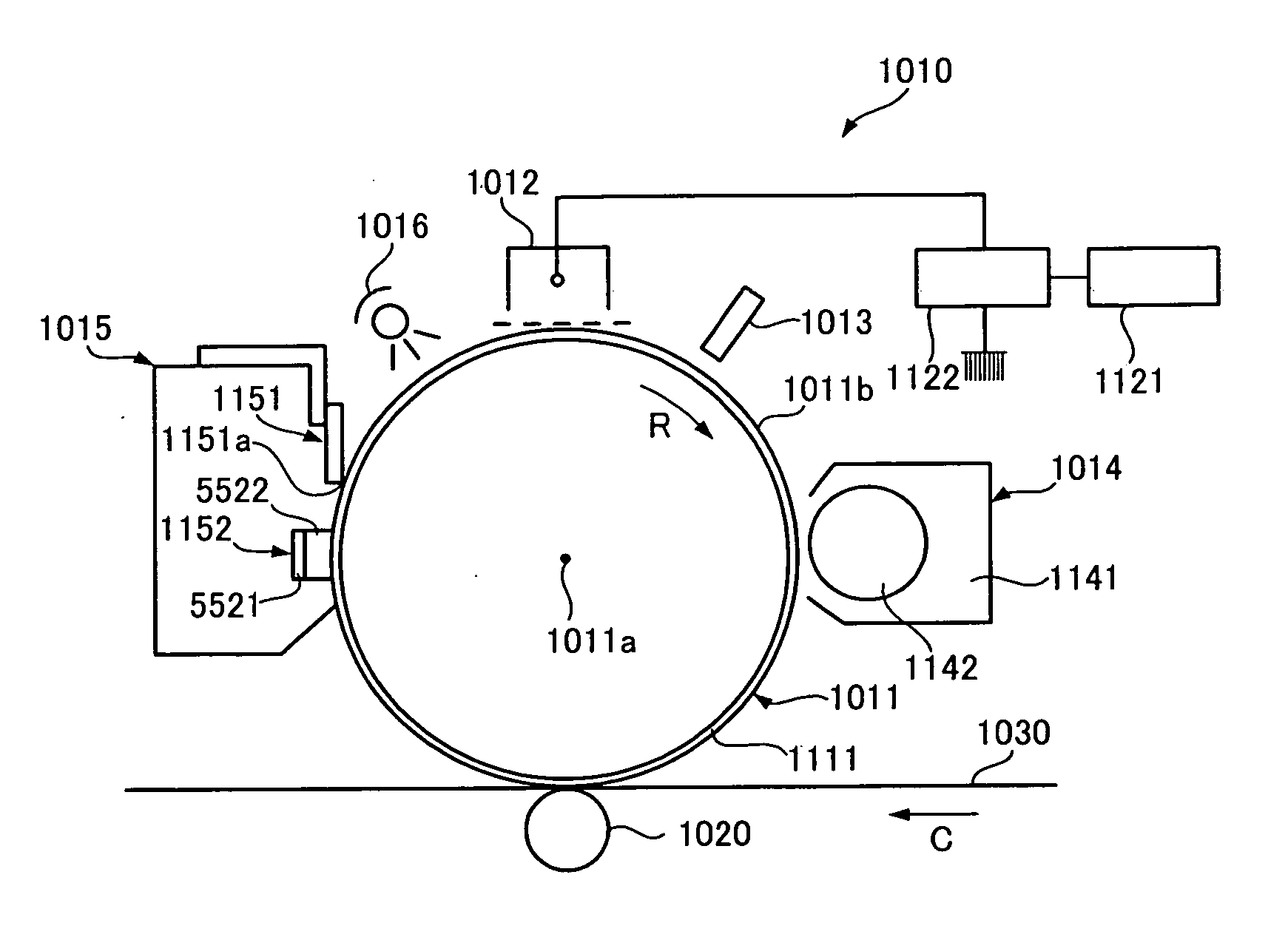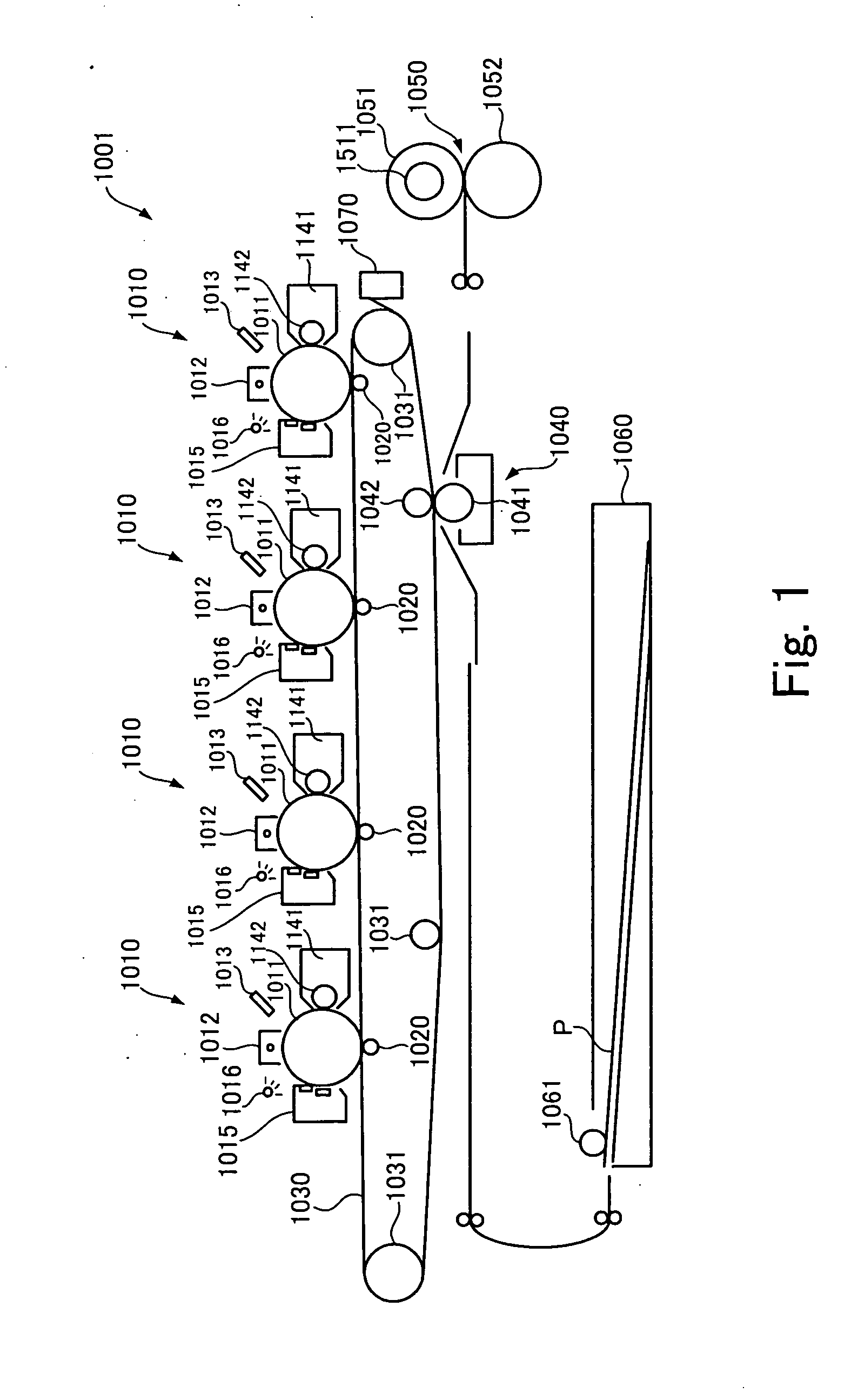Cleaning unit and image forming apparatus
a cleaning unit and image forming technology, applied in the direction of optics, electrographic processes, instruments, etc., can solve the problems of difficult scraping with the cleaning blade, wear or damage of the front edge, and the discharge product is difficult to remove from the surface of the photoreceptor, so as to maintain the cleaning performance of residual toner particles at a high level
- Summary
- Abstract
- Description
- Claims
- Application Information
AI Technical Summary
Benefits of technology
Problems solved by technology
Method used
Image
Examples
example 1
[0230] As a test machine, a reconstructed FUJI XEROX Co., Ltd. Docu-Center Color 500 was used. That is, the photoreceptor A in which the protective layer was formed on the surface thereof was incorporated as the photoreceptor. A cleaning unit equipped with the cleaning blade A and cleaning assistant member A was incorporated. Durability test was carried out about 100,000 pieces under low temperature / low humidity (10° C., 20% RH) and high temperature / high humidity (28° C., 80%) using product developing agent of the Docu-Center Color 500 as developing agent so as to evaluate abrasion of the photoreceptor and flaws on the photoreceptor (photoreceptor roughness). Further, generation of filming was evaluated under low temperature / low humidity and generation of image flow was evaluated under high temperature / high humidity. These results are shown in Table 2 together with comprehensive evaluation.
TABLE 2cleaning unitresult evaluationauxiliarycleaningedgeimagetotalmemberbladeperformanceda...
example 2-5
[0249] The same test and evaluation as the example 1 were executed using the same image forming apparatus as the example 1 except the cleaning blade was changed as shown in Table 2. Its result is shown in Table 2.
example 6-8
[0250] The same test and evaluation as the example 1 were executed using the same image forming apparatus as the example 1 or 2 except the cleaning blade was changed as shown in Table 2. Its result is shown in Table 2.
PUM
 Login to View More
Login to View More Abstract
Description
Claims
Application Information
 Login to View More
Login to View More - R&D
- Intellectual Property
- Life Sciences
- Materials
- Tech Scout
- Unparalleled Data Quality
- Higher Quality Content
- 60% Fewer Hallucinations
Browse by: Latest US Patents, China's latest patents, Technical Efficacy Thesaurus, Application Domain, Technology Topic, Popular Technical Reports.
© 2025 PatSnap. All rights reserved.Legal|Privacy policy|Modern Slavery Act Transparency Statement|Sitemap|About US| Contact US: help@patsnap.com



